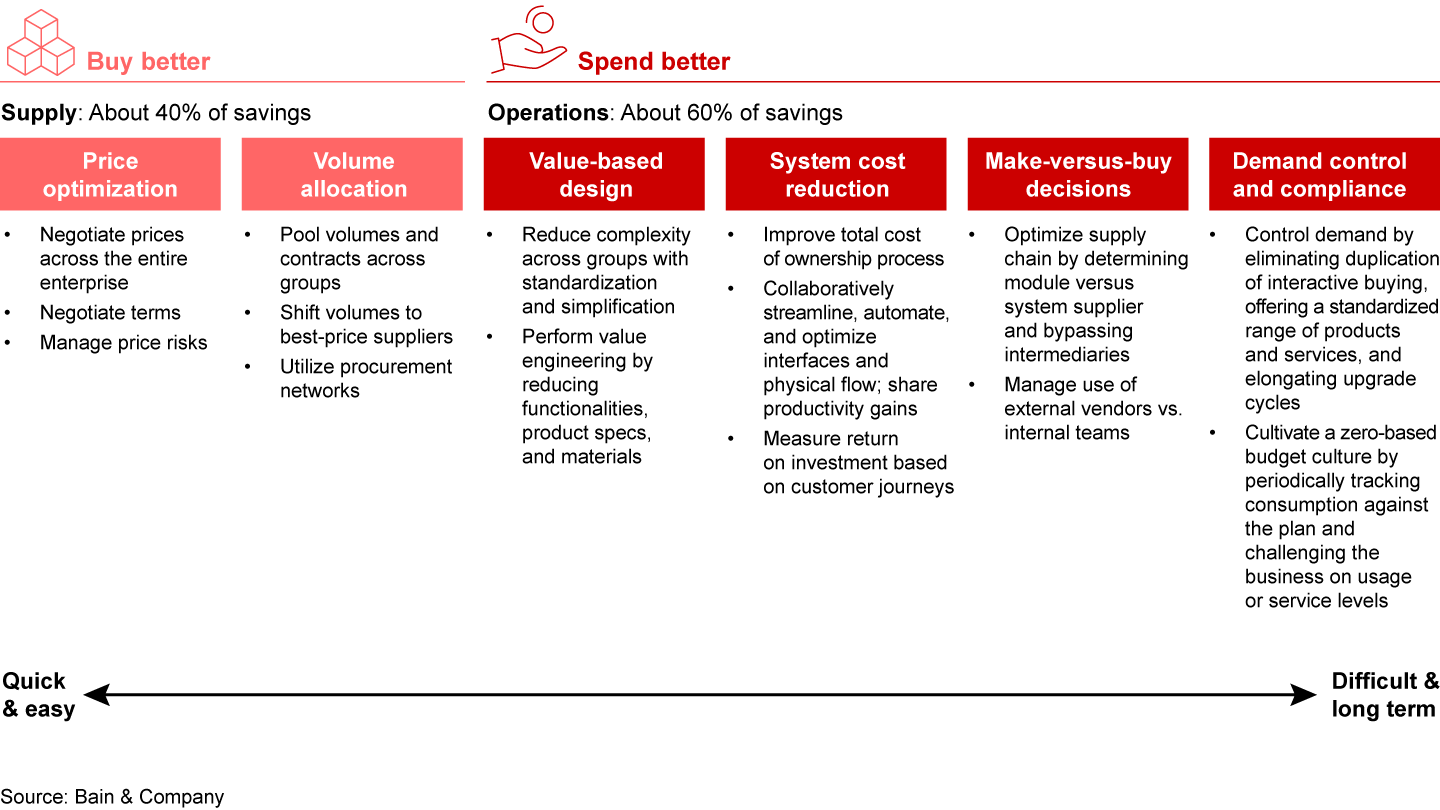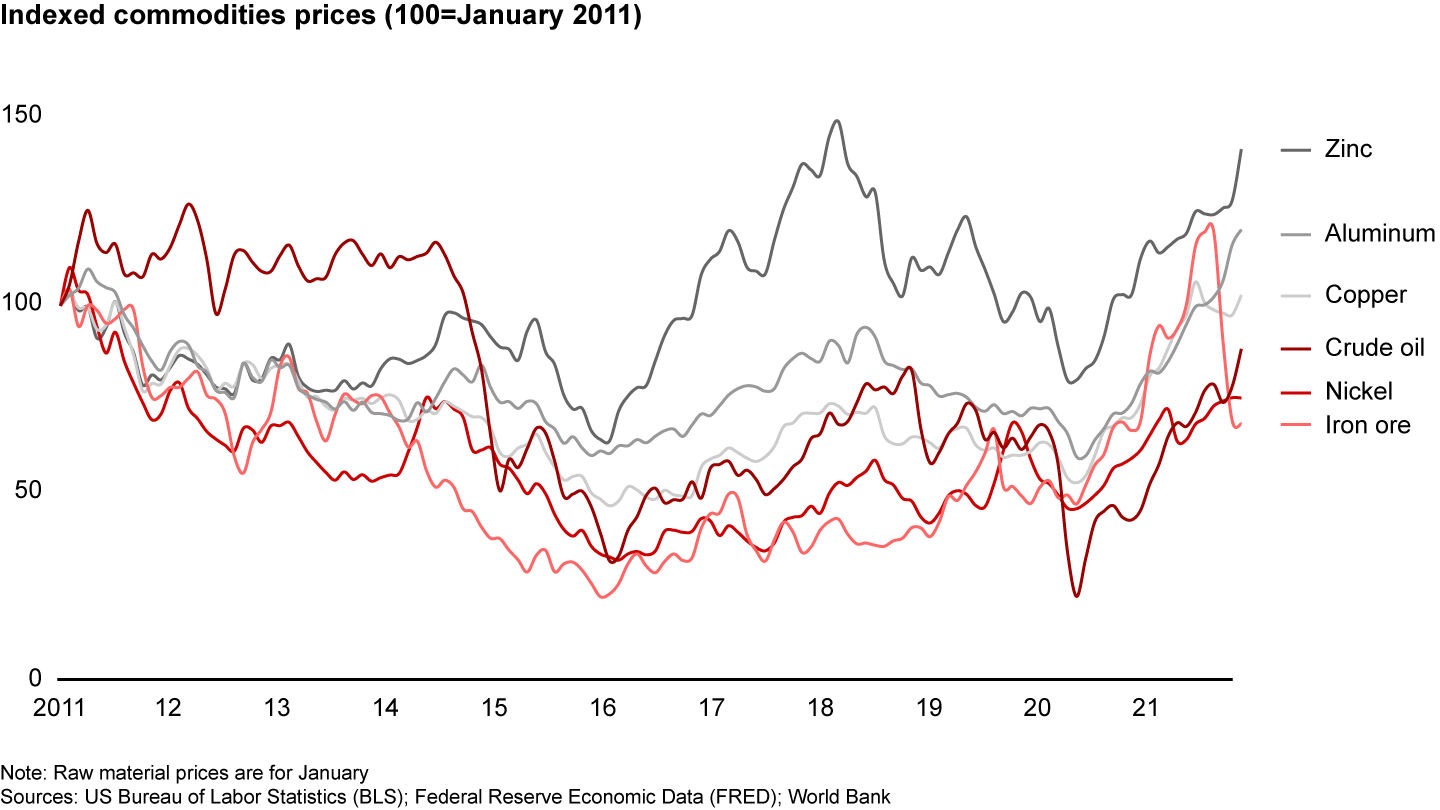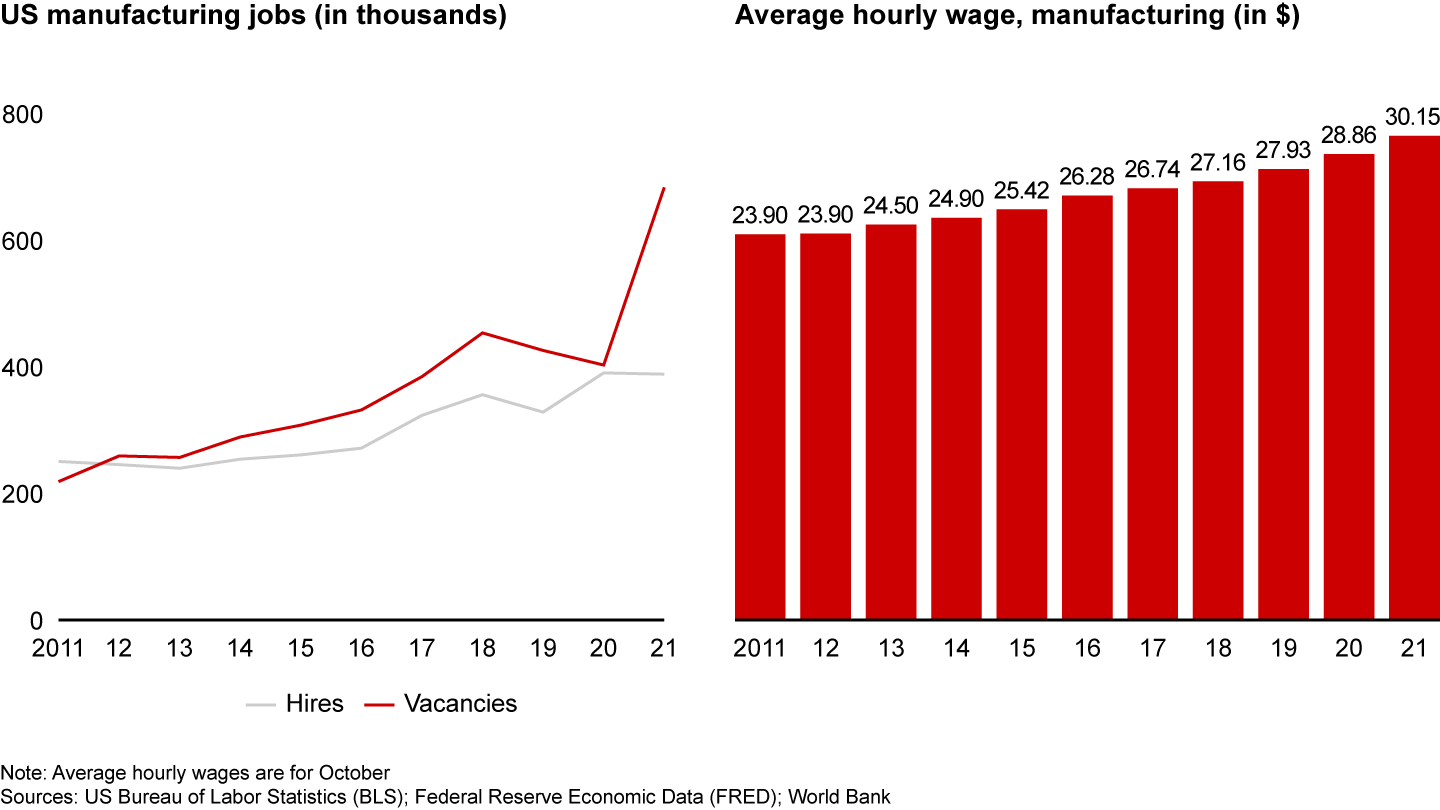Article
 }
}
The Covid-19 pandemic, and the ensuing commodity price disruptions and shortages, have forever altered the world of procurement. In 2022, many businesses will continue to grapple with heavily disrupted supply markets and continuity challenges, temporary and permanent shifts in consumption patterns, a new emphasis on cash and risk management, and changing input costs.
Amid this chaos, procurement teams will also play an intrinsic role as companies revisit their policies and programs to address diversity and inclusion. If they haven’t already, they will need to push supplier diversity to the top of the procurement agenda this year. They will also need to answer the call for sustainability by emphasizing sustainable sourcing and environmentally responsible supply chains.
In this environment, there are few quick hits remaining to rapidly improve the P&L. Instead, most organizations are merely trying to navigate price disruptions and shortages across strategic categories. Procurement leaders’ focus is swiftly shifting from cost savings to a more complex set of goals: improving supply chain risk mitigation and resiliency; strengthening relationships with strategic supply base partners; increasing transparency; supporting nearshoring initiatives while aggressively pursuing savings; and more.
Traditional playbooks focused on reducing costs through sourcing programs that emphasized “buying better” strategies. That won’t be enough in 2022. Leaders will need to broaden their toolkit, finding ways to capture value and strengthen operational resiliency, given the anticipated headwinds.
This year’s continued supply chain challenges will be coupled with increased demand across all industries. And enduring labor shortages and climbing labor costs throughout the value chain will only compound the issue (see Figure 1). Direct material indices are rising, and suppliers are quick to react. These factors are inflating costs across the board—and procurement departments will have to pay up to ensure they meet customer demand.
Many suppliers are passing these material increases on to their customers. But some suppliers are also using rising prices as a chance to increase prices more broadly. This puts more onus on buyers to understand the magnitude of increases, the reasons behind them, and the measures they can take to claw back some of those increases once inflation abates.
In the next year, a balanced perspective on metrics—ones that look at operational agility and supply base resiliency, then cost savings—will distinguish the procurement leaders from the laggards. To succeed, procurement teams will need to strategically seize hidden opportunities with suppliers, by using a more sophisticated toolkit and partnerships with stakeholders around the business.
Procurement leaders have a set of options to give them a more holistic view of potential savings (see Figure 2). Supply-led, or “buy better,” opportunities tend to be easier, as the procurement team can unilaterally accomplish most of these solutions.
However, in our experience, we’ve found that more than 60% of the total value stems from operational efforts. Most of these solutions require substantial change, which calls for deeper functional collaboration and more focus on implementation.
Figure 1: Figure 2

The best procurement teams will change the lens through which they view the elements of their value chain. While suppliers and customers will continue to play their traditional roles, winning teams will also start to see them as strategic partners. For instance, as teams employ value engineering, they will have to develop solutions with customers that meet qualifications and design specs. Concurrently, they will need to collaborate with suppliers to determine if they can implement substitute materials or alternate formulations. Of course, assuming there are opportunities, multidimensional negotiations will be necessary to divide value across these different partners.
Procurement leaders will also need to adjust how they communicate value to their executive teams. Over the years, C-suites have become accustomed to expecting some level of year-on-year cost savings. That said, there’s a real possibility that procurement departments will do some of their best work in 2022 yet have no true cost savings to show for it.
Instead, avoiding costs will play a large role this year—and perhaps even beyond—as top procurement leaders manage through inflation. They will need to redefine their value equations and reframe how they highlight their wins. To do so, procurement teams can consider new markers of success:
- Value management: Our mandate expands beyond cost savings, making us the engine behind ESG initiatives, supplier diversity, and supply risk mitigation.
- Procurement strategy: We acquire goods and services at the best overall value for the organization.
- Sustainability: Our solutions enhance environmental outcomes and boost social impact.
- Organization and operating model: We have the right-sized team, with the right talent and coverage, along with appropriate roles, responsibilities, and coordination with other functions.
- Category management: We optimize results in each category through a structured, strategic approach.
- Supplier management: We manage and collaborate with third-party suppliers to streamline processes and generate value.
By achieving a best-in-class standing in many of these areas, procurement executives can add differential value and thrive through the tumult of 2022.




